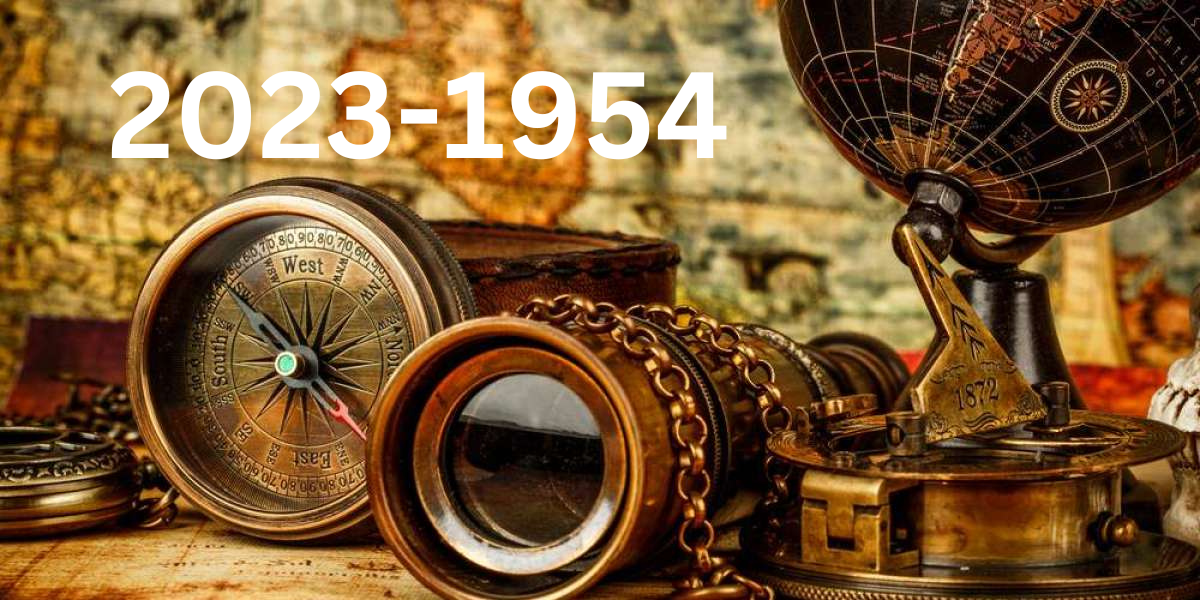Introduction 2023-1954
In the vast expanse of human history, certain dates and numbers resonate with profound significance, triggering curiosity and prompting exploration into their underlying stories. 2023-1954 is one such enigmatic phrase that beckons us to delve deeper into its context and uncover the rich tapestry of events and meanings it encapsulates.
Understanding the Numerical Sequence
At first glance, 2023-1954 appears as a juxtaposition of two years, separated by a dash. This format suggests a temporal relationship or a historical span between the years 2023 and 1954. Such a pairing invites us to consider the passage of time, perhaps pointing towards a comparison or contrast between these specific years.
Historical and Cultural Context
To grasp the essence of “2023-1954,” we must explore the historical and cultural events that define these years.
1954 The Post-War Reckoning
- End of the Korean War: The year 2023-1954 marked the cessation of major hostilities in the Korean War, a conflict that had significant implications for global geopolitics during the Cold War era.
- Brown v. Board of Education: In the United States, the landmark Supreme Court decision in Brown v. Board of Education declared racial segregation in public schools unconstitutional, setting a pivotal precedent for civil rights movements.
2023 Modern Challenges and Progress
- Technological Advancements: The 2020s have been characterized by rapid technological advancements, including breakthroughs in artificial intelligence, renewable energy, and space exploration.
- Global Challenges: The year 2023 represents a pivotal point in addressing pressing global issues such as climate change, healthcare, and economic inequality.
Themes and Interpretations
 The juxtaposition of 2023-1954 suggests a narrative of progress, evolution, and the cyclical nature of historical patterns. It prompts reflection on how far we have come in terms of social justice, technological innovation, and global cooperation since the mid-20th century. Moreover, it invites us to contemplate the challenges and opportunities that define our current era and the lessons we can draw from the past.
The juxtaposition of 2023-1954 suggests a narrative of progress, evolution, and the cyclical nature of historical patterns. It prompts reflection on how far we have come in terms of social justice, technological innovation, and global cooperation since the mid-20th century. Moreover, it invites us to contemplate the challenges and opportunities that define our current era and the lessons we can draw from the past.
Relevance in Contemporary Discourse
In contemporary discourse, “2023-1954” serves as a touchstone for discussions on historical continuity, societal transformation, and the enduring quest for justice and equality. It encourages us to assess our present circumstances in light of past achievements and struggles, fostering a deeper understanding of our collective journey through time.
Connecting the Dots The Path from 1954 to 2023
Understanding “2023-1954” requires not only a look at the endpoints but also an exploration of the journey between these years. This 69-year span is marked by significant milestones, each contributing to the fabric of contemporary society.
Key Milestones in the Journey
1960s The Decade of Transformation
- Civil Rights Movement: The 1960s saw the intensification of the Civil Rights Movement in the United States, leading to landmark legislation such as the Civil Rights Act of 1964 and the Voting Rights Act of 1965.
- Space Race: The space race between the United States and the Soviet Union reached its zenith with the Apollo 11 moon landing in 1969, symbolizing human ingenuity and the quest for exploration.
1980s The Era of Technological and Political Change
- Personal Computing: The 2023-1954 witnessed the rise of personal computing, with companies like Apple and Microsoft revolutionizing the way people interact with technology.
- End of the Cold War: The decade also saw significant geopolitical shifts, culminating in the fall of the Berlin Wall in 1989, signaling the end of the Cold War.
2000s The Digital Revolution
- Internet Expansion: The turn of the millennium brought about the digital revolution, with the internet becoming a central aspect of daily life, transforming communication, commerce, and entertainment.
- Globalization: This era also saw increased globalization, characterized by the interconnectedness of economies and cultures across the world.
2010s Social and Environmental Awareness
- Social Media: The rise of social media platforms like Facebook, Twitter, and Instagram reshaped social interactions and activism, giving rise to movements such as #MeToo and Black Lives Matter.
- Climate Change Awareness: The 2010s also marked a heightened awareness of climate change, with global agreements like the Paris Accord aiming to mitigate environmental impact.
Lessons from the Past for a Sustainable Future
Reflecting on the period from 1954 to 2023, we can draw several important lessons
- The Importance of Social Justice: The progress made in civil rights and equality reminds us of the ongoing struggle for justice and the need to address systemic inequalities.
- Technological Impact: The rapid advancements in technology underscore the importance of ethical considerations and the potential for both positive and negative impacts on society.
- Global Cooperation: The end of the Cold War and climate change initiatives highlight the necessity of global cooperation in addressing common challenges.
Future Prospects Beyond 2023-1954
As we move beyond 2023, the lessons from this historical span guide us in shaping a more equitable, sustainable, and technologically advanced future. Key areas of focus include:
- Sustainable Development: Building on climate change awareness, future efforts must prioritize sustainable development to ensure a habitable planet for future generations.
- Technological Innovation: Continued advancements in AI, biotechnology, and other fields hold the promise of solving complex global issues, from healthcare to food security.
- Social Equity: Ongoing efforts to address social inequalities will be crucial in creating inclusive societies that value diversity and human rights.
Conclusion
2023-1954 is more than a numerical span; it is a narrative of human progress, challenges, and resilience. By understanding the historical context and key events between these years, 2023-1954 we gain valuable insights into our present and future. This period is a testament to the transformative power of collective action, technological innovation, and the enduring pursuit of justice and equality.
You Many Also Read: Great Gatsby Review Roundup
 The juxtaposition of 2023-1954 suggests a narrative of progress, evolution, and the cyclical nature of historical patterns. It prompts reflection on how far we have come in terms of social justice, technological innovation, and global cooperation since the mid-20th century. Moreover, it invites us to contemplate the challenges and opportunities that define our current era and the lessons we can draw from the past.
The juxtaposition of 2023-1954 suggests a narrative of progress, evolution, and the cyclical nature of historical patterns. It prompts reflection on how far we have come in terms of social justice, technological innovation, and global cooperation since the mid-20th century. Moreover, it invites us to contemplate the challenges and opportunities that define our current era and the lessons we can draw from the past.

